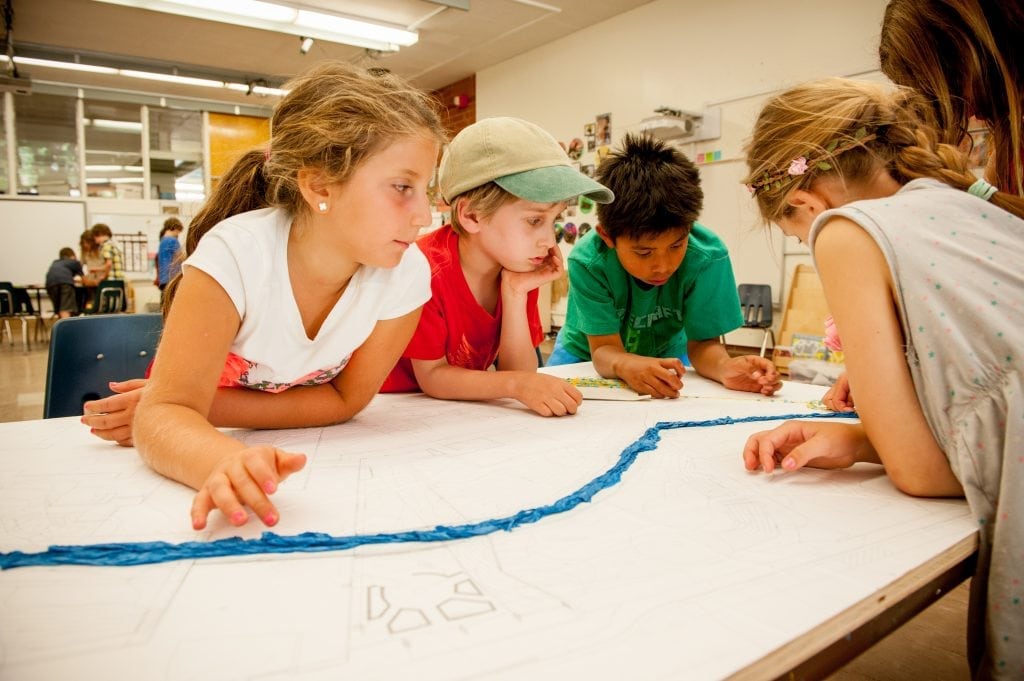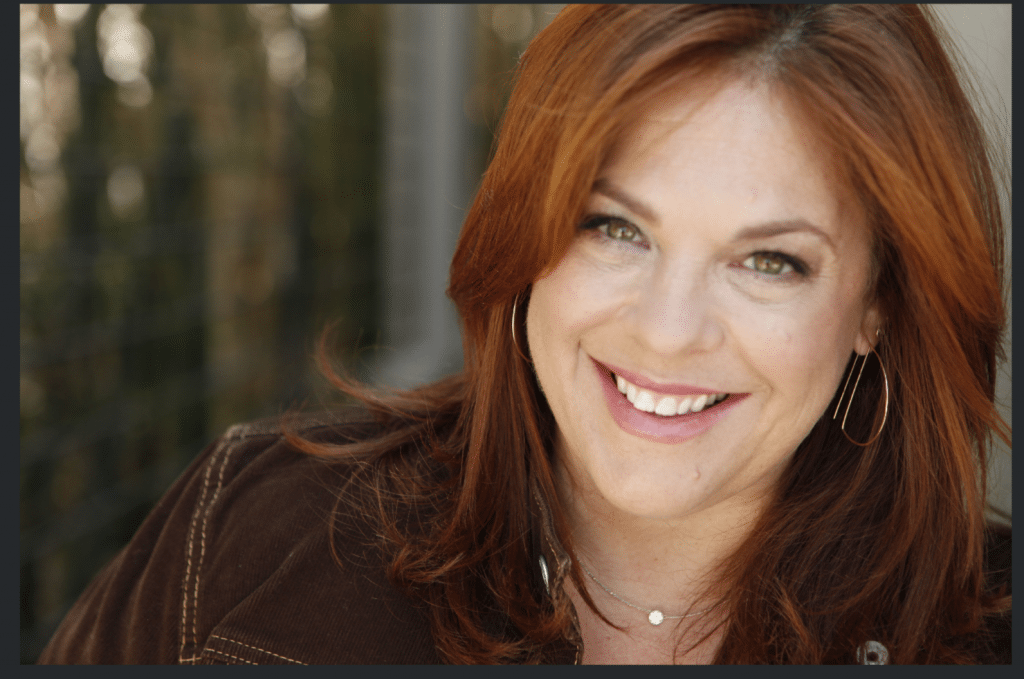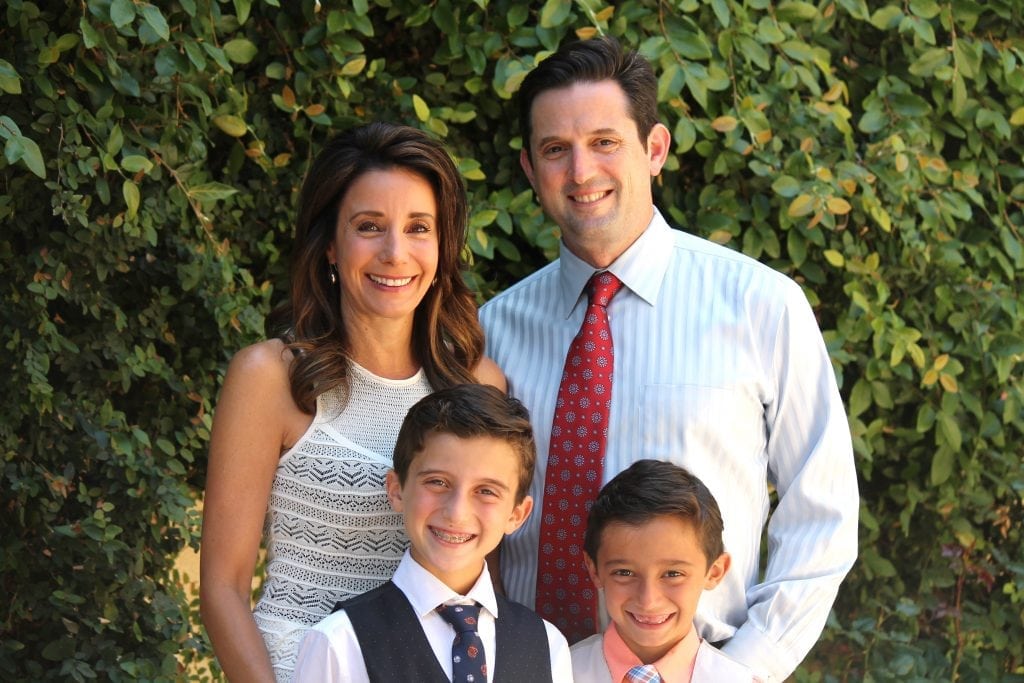
At UCLA Lab School, students learn to be self-advocates through classroom activities and everyday interactions. PHOTO COURTESY UCLA LAB SCHOOL
The weekend was winding down and the four of us headed out for a Sunday matinee. We all decided on “Miracles from Heaven,” rated PG. It’s a story about a 10-year-old girl who has a rare, incurable disease. The mother becomes a fierce advocate for her daughter and the film eventually ends with the young girl recovering from her illness, in what can only be described as a miracle.
But we never got to see the miracle. About a third of the way through the movie, my oldest son, Jackson, who’s 8, tugged on my arm and said he wanted to leave. I whispered to him, “Why? What’s wrong?”
“I just can’t watch this. I want to go now,” he explained. I didn’t understand. Why was this such a big deal? He knows it ends in a miracle. He got up and walked out of the theater. I followed. My husband, Andrew, and my other son, Asher, remained in the theater. I did everything in my power to talk Jackson into going back in. He wouldn’t budge. After a few minutes of sitting with him outside the theater, I told him I would wait with him until the end of the movie. Just as we started to settle in, Andrew rushed out with Asher and tried to convince Jackson it would be OK. Jackson was adamant. He wouldn’t go back. He said it was “too scary.”
We all finally decided to leave. My husband, being the frugal one, went to explain our predicament to the ticket takers and we ended up getting a refund. On our way out, Jackson was quiet. Andrew and Asher quickly started talking sports. I took Jackson’s hand and smiled at him. I stayed quiet too. Then, just as we were about to get into the car, Jackson said to me, “Mommy, thank you. I feel respected.”
Wow, I thought to myself. What a lesson! At that moment I knew I needed to practice this more often. I had to allow my kids to say “no” to me when they needed to and when appropriate, even if it’s uncomfortable or inconvenient. I know this will teach them more than I can imagine. The power of “no” is a gift.

Actress and mom of two Lesley Boone learned to let her “not very sporty” son say “no” after three unhappy soccer practices. PHOTO COURTESY LESLEY BOONE
“It allows children to learn to advocate for themselves,” says Ramani Durvasula, Ph.D., L.A.-based clinical psychologist and author. “It can keep them safe. They learn to say ‘no’ to peer pressure around drugs, sex or other potentially risky behavior, to develop their sense of self and to learn to appropriately voice a preference.” She adds, however, that parents do need to teach their kids the proper time and place. “Saying ‘no’ to the history test probably won’t work, so this isn’t about entitlement or acting out, but rather about self-advocacy,” she says.
This concept is in practice every day at UCLA Lab School, the laboratory school of the UCLA Graduate School of Education and Information Studies. It’s on UCLA’s main Westwood campus and serves students ages from 4-12. The school has a Safe School, research-based philosophy that is all about empowering children, teaching them to be problem solvers, inclusive and self-advocates.
Laurie A. Nimmo-Ramirez is the Safe School demonstration teacher and she says they begin this work with children at age 4 and continue as students get older through role play and classroom projects. “We work to keep the language around telling someone to stop or ‘no’ current and age-appropriate,” she says. “As students mature, we are more thoughtful about how to address issues around peer pressure and exiting a situation. We also know that as students get older they are not as willing to come to an adult for help. We need to give them the tools to say ‘no’ independently and with confidence.” Nimmo-Ramirez says that her predecessor Ava de La Sota, who led the development of the Safe School approach, used to always say, “If they can’t exit cool, they won’t exit.” Teachers at the school work to provide students with opportunities to practice these strategies in realistic scenarios.
In addition to teaching these strategies in the classroom, UCLA Lab School also uses actual conflicts that occur between students every day as opportunities for students to practice and discuss the strategies they have been taught. “We identify the strategies they used (or didn’t use) and how the choices they made either helped or escalated the problem,” says Ramirez. “We work to ‘unpack’ the situation so we can talk about how things could be handled differently by making different choices next time. Many times, these conversations (we call them mediations) include discussions about standing up for yourself, saying, “Stop it!” and, when necessary, exiting a situation.”

Writer Donna Tetreault, pictured here with husband, Andrew, and sons Jackson and Asher, has decided to give her kids the power of “no.” PHOTO COURTESY DONNA TETREAULT
Lesley Boone, an actress and mother of two young children, describes her 6-year-old son, Lucas, as “not very sporty.” He’s that kid who creates and builds. Give him some LEGOS and it’s amazing what he can come up with. All of his friends, though, play in every sports league imaginable. Boone says that when soccer season was on the horizon, she remembers the long email threads the “sporty boys” moms were exchanging. She felt pressure to sign Lucas up – and ultimately did, to keep Lucas from feeling left out.
So how’d it go? “I told him I’d signed him up for soccer,” Boone says. “He was very adamant that he didn’t want to play, but I ignored him. When we went to buy all the gear, he cried, but I ignored him. When we got to the first practice, he was very clingy and had no interest, but I pushed him. I finally realized after three practices that I was doing this for me, not him.” When, after that third practice, Boone finally asked Lucas whether he wanted to play, he answered with a resounding “no.” “He explained to me why he felt this way. I finally heard him,” she says. This is when Boone realized her son deserved his own voice.
As a clinical psychologist, Durvasula says she sees adults – especially women – who struggle to say “no” in their everyday lives. “People are often afraid of disappointing other people, especially in the workplace, and can exhaust themselves in the process of saying ‘yes’ to demanding partners, demanding co-workers, demanding family and demanding friends,” says Durvasula. “Life is about choices, and when we learn to say ‘no’ at a younger age, we may be in a better position to execute the ‘power of no’ in a more consistent way as adults.”
I admit, I am one of those adults who struggles with saying “no.” But now I see the benefits for my children and am reminded that I am their role model. If they see me say “no,” when appropriate, hopefully they will follow my lead and learn how to say “no” with conviction and confidence as they grow and experience the world on their own.
Donna Tetreault is Parenting Contributor at FOX 11. She is also a contributor for The Insider, the ‘Parents’ Guide’ on CBS and a Huffington Post blogger. She lives in Los Angeles with her husband, Andrew, and their two young sons.
























